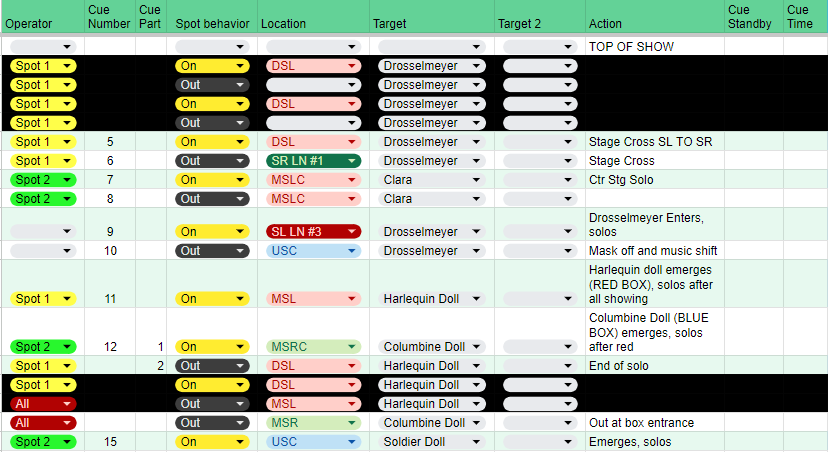Luke_R
Member
Hi all!
I have become involved with a dance company for which I have become their lead follow spot due to my prior experience in other shows and musicals. They have also placed me in charge of creating and calling almost all of the cues for the spot ops, as the person(s) in charge of calling the show and the other op’s may be changing throughout tech week and the actual shows.
Here is my problem:
In my other experiences I have had a script to follow the action (did I just do a pun?) on stage and quickly mark cues as I go along. As this is non-lyrical dance, the closest thing I get is an ordered list of the songs.
The question:
How do you all like to go about writing/recalling cues accurately in dance shows like this? I feel like there has to be an easier solution than trying to remember everything…
Any tips/wisdom/ideas/examples would be greatly appreciated!
Thanks!
I have become involved with a dance company for which I have become their lead follow spot due to my prior experience in other shows and musicals. They have also placed me in charge of creating and calling almost all of the cues for the spot ops, as the person(s) in charge of calling the show and the other op’s may be changing throughout tech week and the actual shows.
Here is my problem:
In my other experiences I have had a script to follow the action (did I just do a pun?) on stage and quickly mark cues as I go along. As this is non-lyrical dance, the closest thing I get is an ordered list of the songs.
The question:
How do you all like to go about writing/recalling cues accurately in dance shows like this? I feel like there has to be an easier solution than trying to remember everything…
Any tips/wisdom/ideas/examples would be greatly appreciated!
Thanks!



